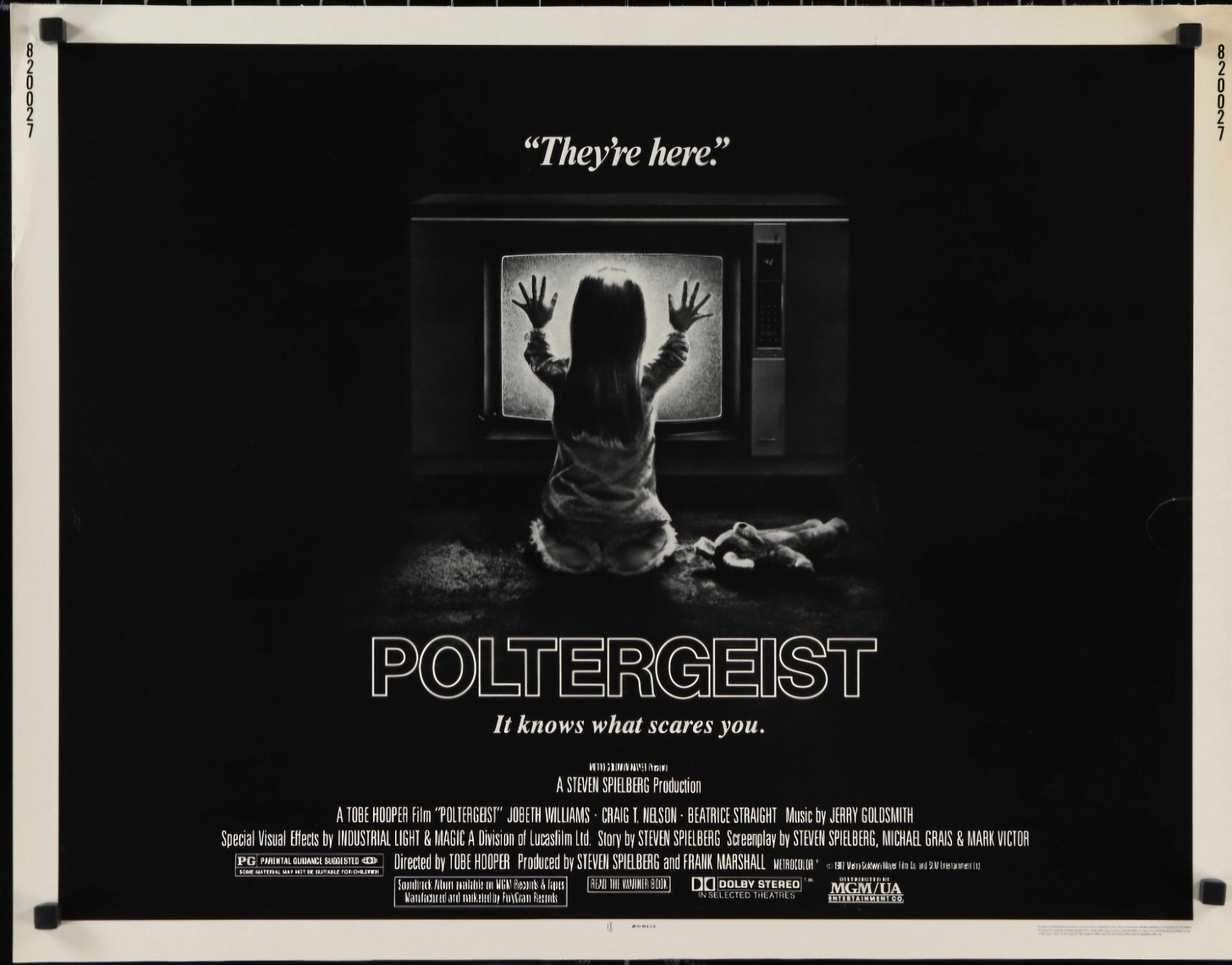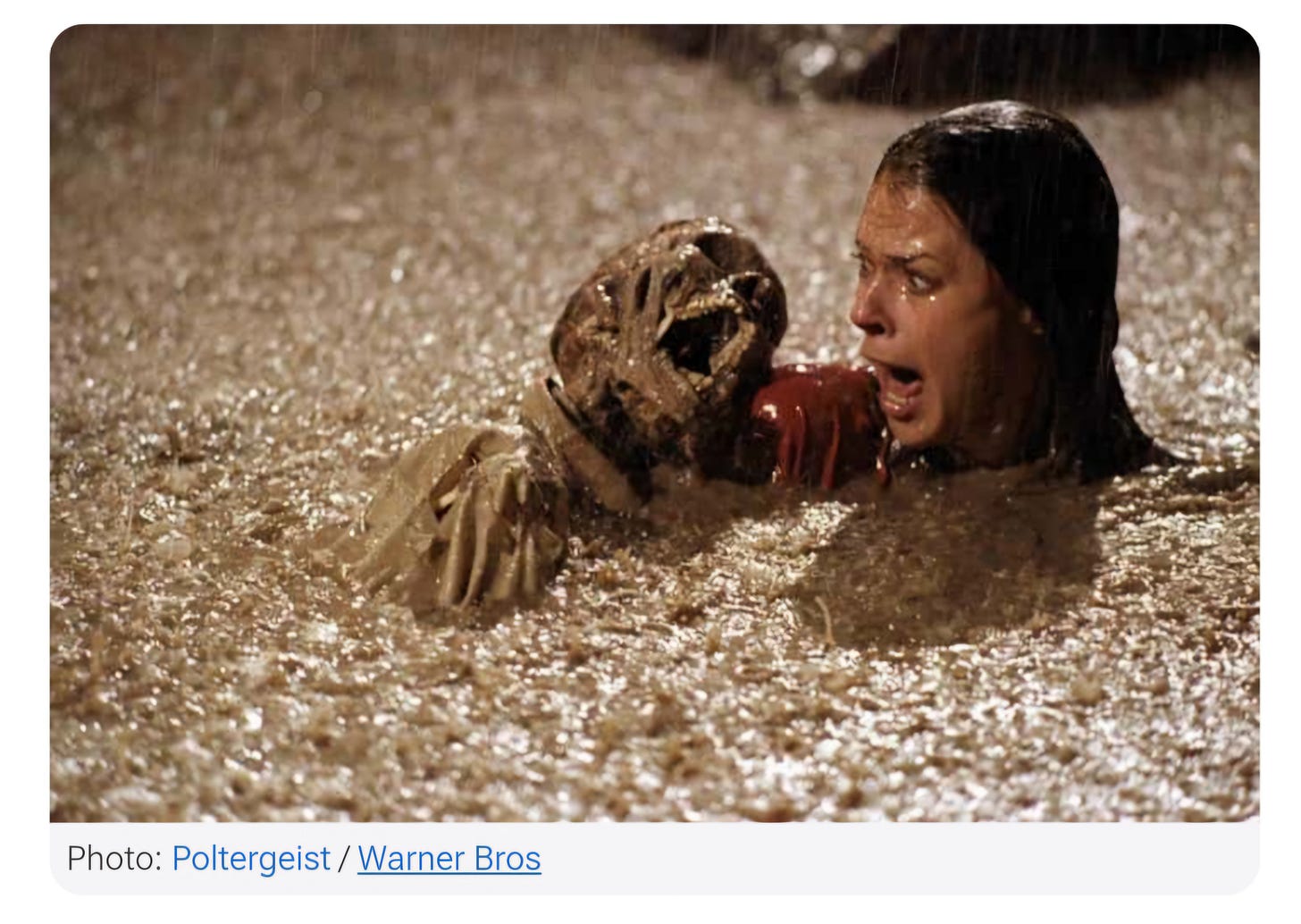The Poltergeist Curse
On October 30, 1982, a young, already-accomplished and promising actress was strangled on her front porch by her abusive ex-boyfriend. Paramedics rushed her to Cedars Sinai Hospital in Los Angeles, but it was too late to save her. Five days later, her parents made the heartbreaking decision to remove the life support, and she tragically died. She was twenty-two, nineteen days shy of her twenty-third birthday.
On January 31, 1988, another young, already-accomplished and promising young actress was rushed to the hospital when her fingers and toes began mysteriously turning blue and she was experiencing shortness of breath. She suffered cardiac arrest in the ambulance; after hospital doctors revived her, she was flown via emergency helicopter to Children’s Hospital in San Diego. Doctors there found an intestinal blockage and performed emergency surgery, but she died shortly after from cardiac arrest on February 1, 1988. She was twelve.
The first actress was named Dominique Dunne. The second, Heather O’Rourke. Their common link? They played sisters in the 1982 movie, Poltergeist.
Poltergeist opened in a wide theatrical release on June 4, 1982, released by MGM/UA Entertainment Co., produced by Steven Spielberg. Spielberg conceptualized the ghost story idea of Poltergeist himself, then went shopping for the right screenwriter. He originally wanted Stephen King to write the screenplay, but King was traveling when Spielberg reached out, and did not see the message in time. When the script was finalized and ready to begin production, Spielberg was busy working on E.T. The Extraterrestrial, and felt he could not devote enough energy to also directing Poltergeist, so he hired Tobe Hooper to direct, and stayed on as producer. Hooper’s previous credits include The Texas Chainsaw Massacre and the TV miniseries Salem’s Lot, based on Stephen King’s novel. Hooper has always been officially credited with Poltergeist, but Spielberg was a very hands-on producer, visiting the set and giving notes and direction quite often. The association stuck. Poltergeist has always been considered a Spielberg film, and not unfairly so. Spielberg was obviously very invested in this project.

A commercial and critical success, Poltergeist is the story of a 1980s family of five living the American dream of owning a nice house in upscale suburbia. The father, Steve Freeling (Craig T. Nelson) is a real estate agent living and selling houses in a development his company has just built. His happy marriage to Diane (JoBeth Williams) and their three thriving children, Dana (Dominique Dunne), Robbie (Oliver Robbins), and Carol Anne (Heather O’Roarke) are monstrously upended when supernatural attacks descend on their contented existence. A creepy cackling clown, an outside tree unfurling its menacing branches into the children’s bedroom during a thunderstorm, kitchen furniture rearranging itself, and TV people sucking little Carol Anne into the ether and threatening her life are just some of the chaos visited upon the Freelings.
SPOILER WARNING: We learn, at the climax of the movie, that these spirits are haunting the homes in the real estate development because Steve’s greedy, sleazy boss, the company ower, built the housing development over a cemetery, and only removed the headstones. He left the bodies buried in the ground, and their souls are exacting their revenge.
Poltergeist bred two sequels, Poltergeist II: The Other Side in 1986 and Poltergeist III in 1988. The second installment was a commercial success but panned critically, and the third movie flopped in every way. Poltergeist remains a beloved horror mainstay, fully alive in our cultural imagination… even if an alarming number of its cast members aren’t.
Dominique Dunne, who played oldest child Dana in the first movie, died shortly after its theatrical release. Her character was “away at college” in the first sequel. Heather O’Rourke, who played Carol Anne Freeling, died after filming and before the theatrical release of Poltergeist III. Julian Beck, who played the evil dead spirit Kane in Poltergeist II, died of stomach cancer at age 60 in 1985. Will Sampson, who played the Native American shaman in the second film, died of kidney failure in June of 1987. Later on, Richard Lawson1, who played Dr. Ryan Mitchell in the original movie, narrowly survived a plane crash in 1992, and Lou Perryman, with a bit part as Pugsley in the first film, was murdered by an ex-convict in his own home in 2009. Thanks to this disturbing roster, the Poltergeist Curse was born.
The Poltergeist Curse holds that the unusual number of untimely, often violent cast member deaths and near-misses occurred because the film franchise is cursed, in part due to the film’s spooky, paranormal material - but lots of horror movies are spooky and involve paranormal activity. The real culprit behind the Poltergeist Curse is: skeletons.
In a pivotal and memorable scene, mom Diane Freeling, played by JoBeth Williams, slides into the backyard pool at night during a torrential rainstorm. She screams and clamors to get out as human skeletons begin popping up around her. At the time of filming, Williams assumed the skeletons were fake, just plastic props. A reasonable assumption, given that it is industry standard practice for horror and action films to use fake weapons, fake blood, fake internal organs, and the like. Many years after the movie’s release, though, Williams was very casually and off-handedly told by a crew member that no, the skeletons were in fact REAL. Apparently, it was cheaper to buy real human skeletons from a medical supply store than purchase realistic-looking plastic or otherwise fake skeletons, so as a cost-cutting measure, the producers chose to buy real ones and not tell the actors.

“American progress, such as it is, often entails building over what came before without acknowledgment or apology, but what was there doesn’t always stay buried.” - Emily C. Hughes, Horror for Weenies
The Poltergeist Curse isn’t real, and also it kind of is. No supernatural haunting caused a number of tragic and untimely deaths to cluster among former cast members - that is something of a very unfortunate coincidence. But Williams was quite displeased and felt a sense of betrayal upon finding out she had been swimming with real human remains and never told, she never consented to such grotesquerie. It’s quite an apt metaphor for the film’s plot. The fictional real estate company cuts corners by not moving the bodies buried in the cemetery, telling no one of their misdeeds, never giving homeowners like the Freelings the choice to live (or work!) elsewhere. The film’s producers cut corners by using real skeletons and didn’t tell the actors what they did, never giving them a choice to consent, to not swim mere inches from actual human remains. Poltergeist is something of a critique of capitalism, or at least the parts of capitalism that reward greed and demand corner-cutting to the point of deceit and disgust. I suppose the Poltergeist Curse is emblematic of parts of capitalism as well, in that the Curse punished actors who knew nothing instead of the producers and directors who made the ugly decision in the first place.
I think Poltergeist remains a fine piece of cinema. The film’s commentary on corporate greed and the pitfalls of materialism have held up over the years. The Freelings remind us to keep our values and souls - stay horrified when confronted with horror. I find it a fun, nostalgic rewatch if you are, ahem, over a certain age - and quite worthy of a first viewing if you’ve never had the pleasure (and the jump scares!).
Trivia Alert! Richard Lawson was married to Beyonce’s mom, Tina Knowles, from 2015 through 2023
SOURCES:
Horror for Weenies: Everything You Need to Know About the Films You’re Too Scared to Watch by Emily C. Hughes
“Heather O’Roarke’s Grieving Mother Tells Why She’s Suing Her Child’s Doctors for Wrongful Death” by John Stark and Eleanor Hoover, People Magazine, June 13, 1988
“Justice: A Father’s Account of the Trial of His Daughter’s Killer” by Dominick Dunne, Vanity Fair, April 8, 2008
“What Really Happened During the Making of Poltergeist” by Anthony Breznican, Vanity Fair, September 22, 2022
“Crash at LaGuardia: Survivors of Mangled Plane Recall Fire, Water, Terror” by N.R. Kleinfield, The New York Times, March 24, 1992



